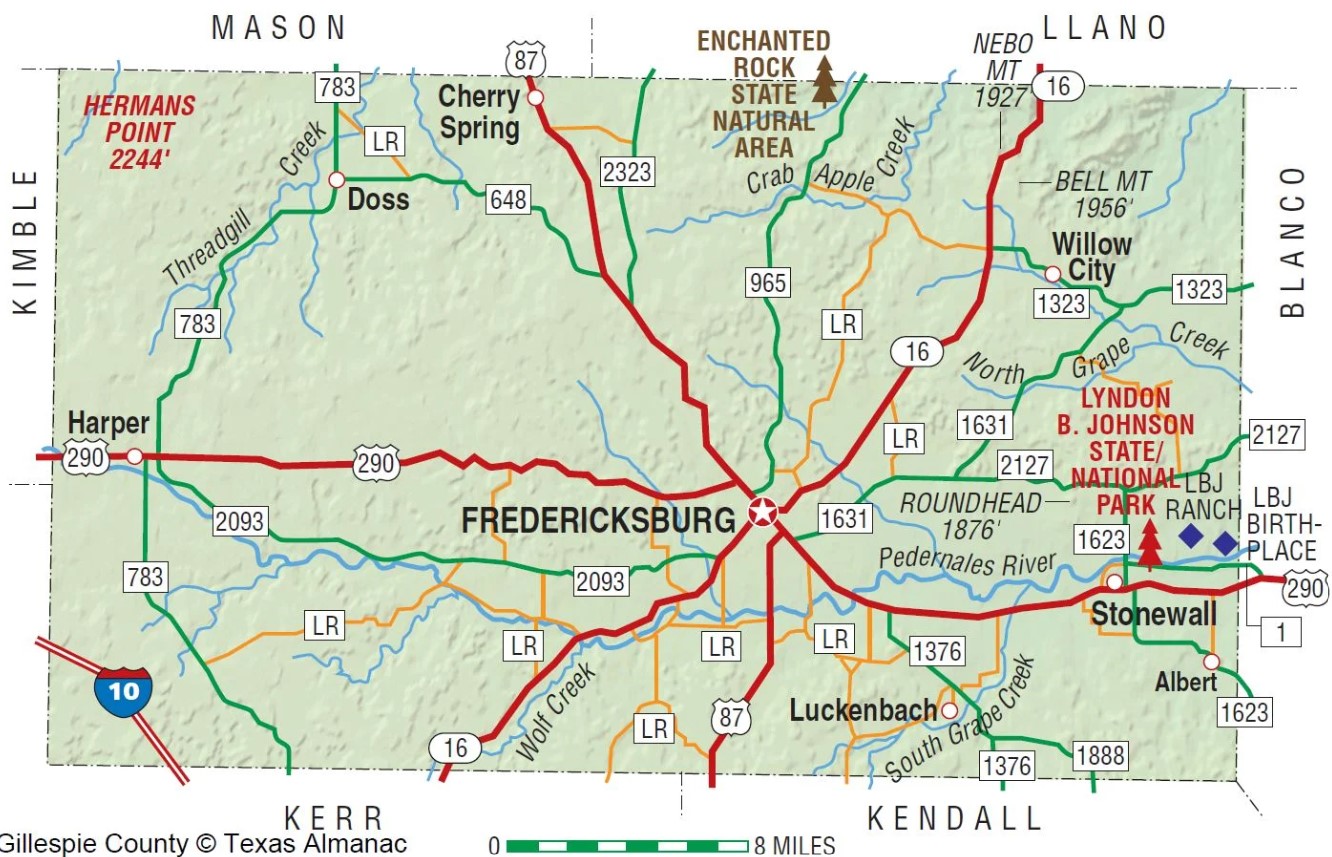How to Get a Wildlife Exemption in Gillespie County?
Interested in a wildlife exemption in Gillespie County? First, it’s not actually a ta exemption but more of a tax valuation. In Texas, the wildlife tax valuation is a property tax incentive program designed to encourage landowners to engage in wildlife management practices that promote habitat conservation and biodiversity.
Under this program, landowners who manage their property for wildlife conservation purposes, rather than traditional agricultural uses like farming or ranching. Gillespie County landowners can maintain an agricultural tax valuation on their property by actively managing for wildlife. To qualify, landowners must implement a wildlife management plan that includes activities such as habitat restoration, invasive species control, providing water sources, or creating wildlife corridors.
The program aims to support long-term conservation efforts and improve the health of ecosystems across the state while providing financial relief to landowners who actively engage in conserving native wildlife and the plant communities they rely on. The most important part of the process is developing a wildlife management plan that must be submitted to the Gillespie County Appraisal District (CAD). In addition, we know exactly how to apply for a wildlife exemption and specialize in helping Texas landowners with the development of wildlife management plans for wildlife exemption.
Wildlife Management in Gillespie County
Wildlife management may qualify your land for the agricultural use valuation. A tract of land can qualify for agricultural appraisal based on wildlife management use in Gillespie County if:
- the tract of land is appraised as qualified open space land;
- the landowner’s primary use of the tract of land is wildlife management;
- the tract of land is actively being managed to sustain a breeding, migrating, or wintering population of native wildlife through implementation of a wildlife management plan;
- in each year for which the owner seeks to qualify the tract for wildlife management use, the landowner has selected at least 3 wildlife management practices and, using wildlife management activities, has implemented each of the selected practices to the degree of intensity required. Wildlife management practices include: A) habitat control, B) erosion control, C) predator control, D) providing supplemental supplies of water, E) providing supplemental supplies of food, F) providing shelters, G) making census counts to determine population.
- the landowner manages native wildlife for human use;
- the tract of land meets the minimum acreage size, if applicable.
- the landowner applies and files a wildlife management plan with Gillespie CAD that outlines the wildlife targeted for management.
- the management practices in the plan meets the minimum intensity levels for the targeted species and wildlife appraisal region.
Gillespie County Wildlife Management Plan
A wildlife management plan typically consists of several key parts designed to help conserve and manage wildlife populations, habitats, and ecosystems. The main components of a wildlife management plan usually include background information, assessment of current plant communities, management goals and objectives, habitat management practices, and a timeline of implementation.
Introduction/Background Information:
- Overview of the property being managed (e.g., region, habitat type, species present).
- Objectives and goals of the wildlife management plan.
- Historical and current ecological context of the wildlife and native plant communities.
Wildlife Inventory and Assessment:
- List of wildlife species present and those targeted for management.
- Wildlife population sizes and trends, including data on threatened or endangered species if appropriate.
- Habitat assessments, including quality, quantity, and distribution.
- Identification of key ecological processes and threats.
Management Goals and Objectives:
- Clear, measurable goals for wildlife conservation, population management, and habitat management.
- Long-term vision for the property and measurable objectives.
Habitat Management and Restoration:
- Plans for protecting, restoring, or enhancing wildlife habitats.
- Strategies for maintaining or improving plant and wildlife diversity.
- actions such as controlled burns, invasive species management, or restoration efforts.
Wildlife Population Management:
- Approaches to maintaining or adjusting wildlife populations through regulated hunting, translocation, breeding programs, or other strategies.
- Monitoring population dynamics and implementing adaptive management techniques.
- Balancing wildlife populations with plant communities carrying capacity.
Implementation and Timeline:
- Specific actions and timeframes for carrying out the management strategies.
- Roles and responsibilities of those involved in the plan’s execution.
- Milestones and timelines for achieving goals.
Wildlife Exemption in Gillespie County & Adaptive Management:
A management plan filed for a wildlife exemption in Gillespie County is considered a 5-year plan. However, the Gillespie CAD is no different that other counties across Texas. The reason is that managing anything, including wildlife, is an ever changing process. Landowners may adapt as circumstances change and land management objectives are met. Although landowners can change practices, in many cases it makes sense to continue conducting established management activities.
Periodic updates do provide landowners with opportunities to make adjustments to management strategies based on monitoring results and changing conditions. However, it does not mean that landowners must change practices. We work with landowners interested in wildlife exemption in Gillespie County to identify their interests and abilities. Then, we develop a wildlife management plan that works for them and the wildlife on their property. Please consider contacting us if you are interested in converting your land to wildlife management.

